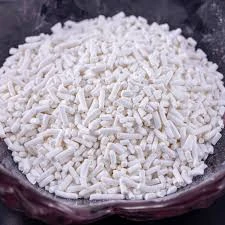
cake additives
Enhancing Cakes with Additives A Baker’s Guide
Baking a cake can be both an art and a science, where precision in measurements and techniques combines with creativity in flavors and designs. While the basic ingredients include flour, sugar, eggs, and butter, many bakers have turned to a variety of additives to elevate their cakes to new heights. These additives can modify texture, enhance flavor, or extend shelf life, making them indispensable tools in any baker's arsenal.
Common Cake Additives
1. Leavening Agents Perhaps the most crucial category of additives in cake baking, leavening agents such as baking powder and baking soda help the cake rise. Baking powder is a combination of an acid and a base, which reacts with moisture and heat to produce carbon dioxide gas, resulting in a light and airy cake. Baking soda, on the other hand, requires an acidic component (like yogurt or vinegar) to activate its leavening properties. Both can be adjusted depending on the desired texture of the cake, whether it be dense like a pound cake or light and fluffy like a chiffon.
2. Fats and Oils While butter is a traditional cake ingredient, other fats such as vegetable oil, shortening, or even mascarpone can be used to alter the texture and moisture level of a cake. For instance, using oil instead of butter can create a moister crumb, while shortening can provide stability in warmer temperatures, making it a favorite for outdoor weddings or summer celebrations.
3. Emulsifiers These are additives that help combine ingredients that typically don’t blend well, such as oil and water. Lecithin, often derived from eggs or soy, acts as a natural emulsifier in cake batters. Incorporating emulsifiers can lead to a more uniform texture and enhance the cake’s ability to retain moisture, leading to a longer-lasting product.
cake additives

4. Stabilizers In cakes that require whipped ingredients, like whipped cream frosting or meringue toppings, stabilizers such as gelatin or cornstarch can be invaluable. They help maintain structure and prevent collapsing, ensuring that your cake looks as good as it tastes even after a few hours at room temperature.
5. Flavor Enhancers Additives like vanilla extract, almond extract, or citrus zest can amplify the flavor profile of a cake. Additionally, powdered flavorings (like cocoa powder for chocolate cakes) or instant coffee granules can add complexity to the flavor without altering the volume of the batter significantly.
6. Preservatives For professional bakers who need to extend the shelf life of their cakes, preservatives such as potassium sorbate can be useful. These additives prevent the growth of mold and bacteria, allowing cakes to be stored longer without compromising quality.
Balancing Creativity and Science
While using additives can provide significant benefits, it is essential to understand their functions and how they interact with the other ingredients in your batter. Overusing additives can lead to unforeseen consequences—such as a cake that doesn’t rise properly or has an unusual texture. Balancing creativity with scientific principles will help any baker achieve the best results.
In conclusion, cake additives offer bakers a myriad of options to improve texture, flavor, and shelf life. By understanding how these ingredients work, bakers can create delicious, visually appealing cakes that impress and delight in any setting. Whether you’re a home baker or a professional, experimenting with these additives can lead to personalized and innovative cake creations that stand out. Happy baking!
-
Understanding Synthetic Rubber OptionsNewsApr.27,2025
-
Trichloroisocyanuric Acid: Essential for Clean and Safe WaterNewsApr.27,2025
-
Sodium Dichloroisocyanurate: Key to Safe Water TreatmentNewsApr.27,2025
-
Sodium Acid Pyrophosphate: Essential in Modern Food ProcessingNewsApr.27,2025
-
Essential Water Treatment ChemicalsNewsApr.27,2025
-
Denatured Alcohol and Its Industrial UsesNewsApr.27,2025
-
The Versatile Uses of Sodium BicarbonateNewsApr.24,2025
Hebei Tenger Chemical Technology Co., Ltd. focuses on the chemical industry and is committed to the export service of chemical raw materials.
-

view more DiethanolisopropanolamineIn the ever-growing field of chemical solutions, diethanolisopropanolamine (DEIPA) stands out as a versatile and important compound. Due to its unique chemical structure and properties, DEIPA is of interest to various industries including construction, personal care, and agriculture. -

view more TriisopropanolamineTriisopropanolamine (TIPA) alkanol amine substance, is a kind of alcohol amine compound with amino and alcohol hydroxyl, and because of its molecules contains both amino and hydroxyl. -

view more Tetramethyl Thiuram DisulfideTetramethyl thiuram disulfide, also known as TMTD, is a white to light-yellow powder with a distinct sulfur-like odor. It is soluble in organic solvents such as benzene, acetone, and ethyl acetate, making it highly versatile for use in different formulations. TMTD is known for its excellent vulcanization acceleration properties, which makes it a key ingredient in the production of rubber products. Additionally, it acts as an effective fungicide and bactericide, making it valuable in agricultural applications. Its high purity and stability ensure consistent performance, making it a preferred choice for manufacturers across various industries.











